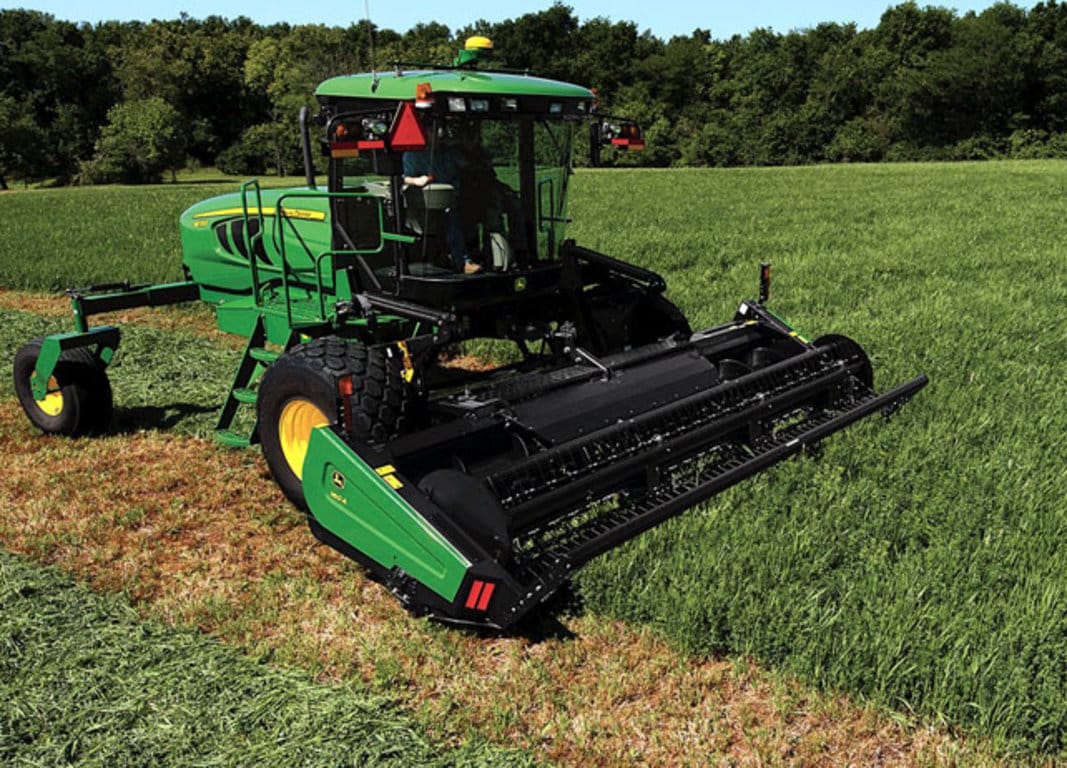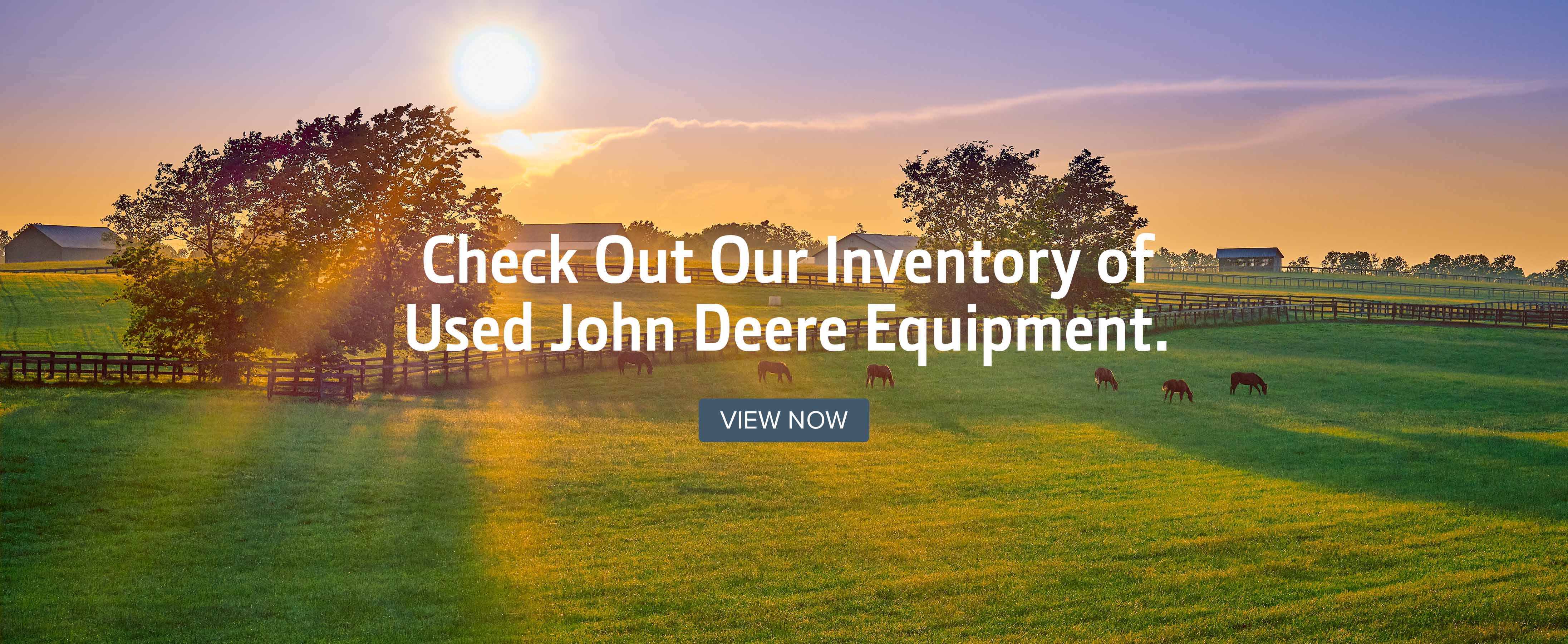What is a Windrower?
To achieve success in anything they do, farmers everywhere know that productivity and efficiency are key. This is especially true when it comes to haying, a task that can be tough, tiresome, and time-consuming if the right equipment is not involved. Windrowers, also known as swathers, are designed to address this potential issue by cutting grain and placing stalks in windrows so that they can be threshed and cleaned down the line.
By employing a windrower, producers can easily ensure their windrows have been created at optimal widths, a critical factor when it comes time to bale the hay. When properly laid out, the hay can be fed into the baler and distributed evenly across the bale. If the windrows are too narrow, it is likely that the bale of hay will be much thicker in the center than it is on the ends.
Why do Farmers Use Windrowers?
Farmers use windrowers to cut, separate, and create rows of hay or small grain crops. Windrowers are typically self-propelled machines that use a sickle bar to cut the crops and a reel to lift them onto a conveyor belt. From there, the conveyor belt deposits the crops in a windrow, which is a long, narrow row of cut crops.
What Are the Different Types of Windrowers?
John Deere features a variety of windrowers depending on the size of the crop and the terrain. Some of the different types of John Deere windrowers include:
- W200 Series Windrowers
- W300 Series Windrowers
- W400 Series Windrowers
- W500 Series Windrowers
- W600 Series Windrowers
Tips for Using a Windrower
Get the most out of your windrower and maximize productivity with the following tips:
Check the Field Perimeter
Prior to cutting your hay crop, be sure to check the field perimeter for branches, sticks, or other types of debris that could get caught and damage the teeth of your windrower.
Avoid Dull Blades
As is the case with other pieces of equipment, the blades of windrowers tend to dull over time, reducing the machine’s ability to cleanly cut hay. Hay that is cut with a dull blade can tear and dry out more quickly, leaving the remaining hay stubble more vulnerable to disease. Replacing blades before they become too dull is critical to avoiding these issues.
Keep an Eye on Alerts
Be sure to regularly monitor gauges, dials, and other machine indicators on your windower to avoid easily preventable damage.
Flag Issues Before They Get Worse
Upon noticing a problem with your windrower, take the time to troubleshoot and discover where the root of the issue is. Once the source is found, you can tackle repairs yourself or call on an expert to take a look.
Maintain a Steady Speed
In the world of haying, driving fast does not always mean increased productivity. In fact, it can be detrimental to the state of hay stubble. By maintaining a consistent speed across the field, the windrower will produce a smooth cut to every blade of hay.
What is the Difference Between a Swather and a Windrower?
There is no difference between a swather and a windrower, only that different parts of the world use different words to describe them. In North America, they are called a swather, and the rest of the world refers to them as a windrower.
For more information regarding John Deere harvesting equipment, contact your local John Deere dealer.
References:

